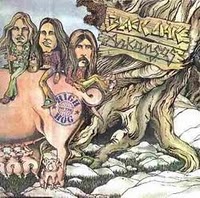 Clodhoppin’ rockers Black Oak Arkansas achieved their biggest success with High on the Hog and it’s obnoxious #25 single “Jim Dandy,” which featured raspy vocalist Jim “Dandy” Mangrum and Ruby Starr hootin’ it up like a pair of courtin’ cousins. Featuring a few other, similarly buck-toothed entries in “Happy Hooker,” and acoustic pickers “Back to the Land” and “High ‘n’ Dry,” High on the Hog is redeemed by the inclusion of nasty southern-livin’ rockers like the funky opener “Swimmin’ in Quicksand,” the churning “Red Hot Lovin’,” and “Mad Man,” while “Moonshine Sonata” is a vintage guitarmony laced instrumental. Possessing neither the sophistication of an Allmans or attitude of Skynrd, High on the Hog is yer basic roll in the mud through a set of lowbrow rube-rock, worth checking out for fans of the genre. –Ben
Clodhoppin’ rockers Black Oak Arkansas achieved their biggest success with High on the Hog and it’s obnoxious #25 single “Jim Dandy,” which featured raspy vocalist Jim “Dandy” Mangrum and Ruby Starr hootin’ it up like a pair of courtin’ cousins. Featuring a few other, similarly buck-toothed entries in “Happy Hooker,” and acoustic pickers “Back to the Land” and “High ‘n’ Dry,” High on the Hog is redeemed by the inclusion of nasty southern-livin’ rockers like the funky opener “Swimmin’ in Quicksand,” the churning “Red Hot Lovin’,” and “Mad Man,” while “Moonshine Sonata” is a vintage guitarmony laced instrumental. Possessing neither the sophistication of an Allmans or attitude of Skynrd, High on the Hog is yer basic roll in the mud through a set of lowbrow rube-rock, worth checking out for fans of the genre. –Ben
Rock
Rainbow “Rising” (1976)
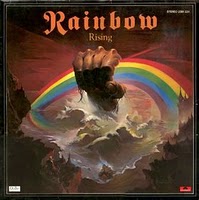 As a blossoming Deep Purple fan ‘Rising’ was my introduction to Ritchie Blackmore’s post-Purple work and although I was initially ambivalent about the sound and Dio’s voice I’ve since come to love this music which, has also helped me appreciate Dio’s stint with Black Sabbath a lot more. After a debut album that fiddled with some of Ritchie Blackmore’s ideas, ‘Rising’ sounds more like a band effort and everything about the sound has got heavier. Dio’s lyrics took me a while to get used to but they sound tailor-made for this kind of dramatic heavy rock and his voice is so good it doesn’t matter matter what is said. The first side of ‘Rising’ is made up of short, punchy heavy rock songs with “Do You Close Your Eyes” being the album’s weakest track and a mood lightener before the album’s two big statements, “Stargazer and “A Light In The Black”. “Stargazer” is a huge undertaking that demands nothing but the best from the people involved. The heavy drone is sustained for eight and a half minutes and Dio’s range is tested in trying to match the constant thunder of the music. “A Light In The Black” is my personal favorite moment of the album, proving that this line-up could rock as hard as anybody. Cozy Powell drives the song along, allowing Dio to swoop and fly vocally, and Tony Carey takes on Ritchie Blackmore in a furious solo battle that brings out the best from both. The album’s a bit short and there isn’t a huge amount of variation but ‘Rising’ contains six good tracks and at least two essentials. –Tom
As a blossoming Deep Purple fan ‘Rising’ was my introduction to Ritchie Blackmore’s post-Purple work and although I was initially ambivalent about the sound and Dio’s voice I’ve since come to love this music which, has also helped me appreciate Dio’s stint with Black Sabbath a lot more. After a debut album that fiddled with some of Ritchie Blackmore’s ideas, ‘Rising’ sounds more like a band effort and everything about the sound has got heavier. Dio’s lyrics took me a while to get used to but they sound tailor-made for this kind of dramatic heavy rock and his voice is so good it doesn’t matter matter what is said. The first side of ‘Rising’ is made up of short, punchy heavy rock songs with “Do You Close Your Eyes” being the album’s weakest track and a mood lightener before the album’s two big statements, “Stargazer and “A Light In The Black”. “Stargazer” is a huge undertaking that demands nothing but the best from the people involved. The heavy drone is sustained for eight and a half minutes and Dio’s range is tested in trying to match the constant thunder of the music. “A Light In The Black” is my personal favorite moment of the album, proving that this line-up could rock as hard as anybody. Cozy Powell drives the song along, allowing Dio to swoop and fly vocally, and Tony Carey takes on Ritchie Blackmore in a furious solo battle that brings out the best from both. The album’s a bit short and there isn’t a huge amount of variation but ‘Rising’ contains six good tracks and at least two essentials. –Tom
My Bloody Valentine “Isn’t Anything” (1988)
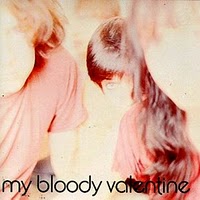 My Bloody Valentine spent a few years wasting time in paisley limbo before growing a massive pair and reinventing psychedelic music as well as a new language for the electric guitar. Isn’t anything is their first full length representation of this, and in my opinion, their greatest achievement as a band. Jesus and Marychain and Spacemen 3 may have peaked before this, as critics love to point out, but who really gives a shit? The Marychain and Spacemen are the dictionary definition of posers, who in the process of riding on America’s musical history for cool points, happened to luck out and make some good music. But there’s nothing original there, no real emotion. Isn’t Anything, on the other hand, is just a total swirling cacophony of electric sounds and emotions; sometimes bending, sometimes stacked on top of each other,sometimes crashing. You realize that this is truly what it feels like to be an opened up human being. It’s the feeling that you’re feeling everything at once and bordering on insanity except that the one connecting point is, no matter what emotions are consuming your senses, they will be extreme. Love, loss, change, it’s all here in it’s purest form, the abstract form. And what’s truely impressive is that the music doesn’t sound dated at all yet it’s blatently psychedellic. The drums and bass border on hardcore via Dinosaur Jr’s mammoth-like approach, while the guitars and vocals, both provided by the heavenly duo of Kevin Sheilds and Belinda Butcher, flow over and consume the sound in a way that the ocean might look lazy but ultimately it couldn’t give a fuck about you and could wipe you out in a second if you were in the way of it’s power. Just throw this on, and make sure it’s at a somewhat loud enough volume. –Alex
My Bloody Valentine spent a few years wasting time in paisley limbo before growing a massive pair and reinventing psychedelic music as well as a new language for the electric guitar. Isn’t anything is their first full length representation of this, and in my opinion, their greatest achievement as a band. Jesus and Marychain and Spacemen 3 may have peaked before this, as critics love to point out, but who really gives a shit? The Marychain and Spacemen are the dictionary definition of posers, who in the process of riding on America’s musical history for cool points, happened to luck out and make some good music. But there’s nothing original there, no real emotion. Isn’t Anything, on the other hand, is just a total swirling cacophony of electric sounds and emotions; sometimes bending, sometimes stacked on top of each other,sometimes crashing. You realize that this is truly what it feels like to be an opened up human being. It’s the feeling that you’re feeling everything at once and bordering on insanity except that the one connecting point is, no matter what emotions are consuming your senses, they will be extreme. Love, loss, change, it’s all here in it’s purest form, the abstract form. And what’s truely impressive is that the music doesn’t sound dated at all yet it’s blatently psychedellic. The drums and bass border on hardcore via Dinosaur Jr’s mammoth-like approach, while the guitars and vocals, both provided by the heavenly duo of Kevin Sheilds and Belinda Butcher, flow over and consume the sound in a way that the ocean might look lazy but ultimately it couldn’t give a fuck about you and could wipe you out in a second if you were in the way of it’s power. Just throw this on, and make sure it’s at a somewhat loud enough volume. –Alex
Pink Floyd “Atom Heart Mother” (1970)
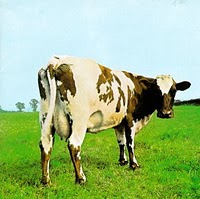 This is a hard Pink Floyd album, even the band admits it was an unwise “concept” idea. Side one, the “Atom Heart Mother Suite” marries orchestration with Floyd’s ethereal wisps of other worldliness, but…it didn’t quite turn out. The AHM is not quite a convincing mesh of band and orchestra as the band and orchestra play around each other, not together. To me, the issue is AHM really acts more as a traditional score/soundtrack rather than a Floyd contemporary reinvention of soundtrack soundscapes into what should have been a major prog opus, but…it needed more (no pun!!). That said convoluted as it’s concept and execution, to my ears, some bits did work out, side two…Summer ’68, Alan’s Psychedelic Breakfast…are all sublime slow burners. It’s a record you need to have if you dig seventies era Floyd at all, for experience, it’s a sweet struggle to hear the Floyd moving past Gilmour’s recreation of the world Syd Barrett invented. –Nipper
This is a hard Pink Floyd album, even the band admits it was an unwise “concept” idea. Side one, the “Atom Heart Mother Suite” marries orchestration with Floyd’s ethereal wisps of other worldliness, but…it didn’t quite turn out. The AHM is not quite a convincing mesh of band and orchestra as the band and orchestra play around each other, not together. To me, the issue is AHM really acts more as a traditional score/soundtrack rather than a Floyd contemporary reinvention of soundtrack soundscapes into what should have been a major prog opus, but…it needed more (no pun!!). That said convoluted as it’s concept and execution, to my ears, some bits did work out, side two…Summer ’68, Alan’s Psychedelic Breakfast…are all sublime slow burners. It’s a record you need to have if you dig seventies era Floyd at all, for experience, it’s a sweet struggle to hear the Floyd moving past Gilmour’s recreation of the world Syd Barrett invented. –Nipper
Crazy Horse “At Crooked Lake” (1972)
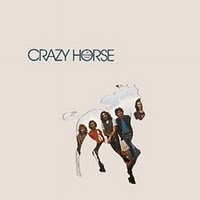 I love this record, it skillfully straddles country rock and (something like) power pop without sounding contrived. The songs are uplifting, driving, downright sweet and packed full of harmonies…the album is worth it alone for the lead track “Rock and Roll Band”! And, honestly, for all the Neil Young and Crazy Horse collaborations considered canon, I’d play this before any Neil Young (and Crazy Horse) record. Take a second to swallow/regain your composure…I KNOW, right!? Don’t hate me…but…it’s true!! Crooked Lake is that good. Unfortunately, with member Danny Whitten locked into a downward spiral of booze and pills, from which he would die soon after, this was the last of Crazy Horses LPs before they faded back into their other bands for a bit…Nils Lofgren back to Grin, Nitzsche, back in to production work…and the other core Crazies back with Mr. Young. Crazy Horse wouldn’t reassemble, without Young, until 1978’s Crazy Moon. –Nipper
I love this record, it skillfully straddles country rock and (something like) power pop without sounding contrived. The songs are uplifting, driving, downright sweet and packed full of harmonies…the album is worth it alone for the lead track “Rock and Roll Band”! And, honestly, for all the Neil Young and Crazy Horse collaborations considered canon, I’d play this before any Neil Young (and Crazy Horse) record. Take a second to swallow/regain your composure…I KNOW, right!? Don’t hate me…but…it’s true!! Crooked Lake is that good. Unfortunately, with member Danny Whitten locked into a downward spiral of booze and pills, from which he would die soon after, this was the last of Crazy Horses LPs before they faded back into their other bands for a bit…Nils Lofgren back to Grin, Nitzsche, back in to production work…and the other core Crazies back with Mr. Young. Crazy Horse wouldn’t reassemble, without Young, until 1978’s Crazy Moon. –Nipper
Big Star “#1 Record” (1972)
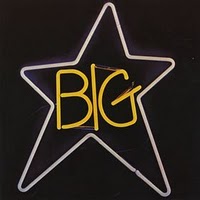 A shimmering, exciting record that captures pop’s innocence, hints at rock’s degradation, and mines melody for all it’s worth, this is the gold standard by which all so-called power pop would be measured. The only group I know of to convincingly meld the Beatles, Byrds, and Rolling Stones to create something wholly new, this has been worshipped by hipsters for years and influenced countless great bands… but in a just world, the three original Big Star albums would be at least as famous as the aforementioned bands’ classics. Perhaps it’s just too skewed to register in the popular psyche. The harmonies are unconventional, the guitar attack hard but never wanky, the ballads emotionally complex.
A shimmering, exciting record that captures pop’s innocence, hints at rock’s degradation, and mines melody for all it’s worth, this is the gold standard by which all so-called power pop would be measured. The only group I know of to convincingly meld the Beatles, Byrds, and Rolling Stones to create something wholly new, this has been worshipped by hipsters for years and influenced countless great bands… but in a just world, the three original Big Star albums would be at least as famous as the aforementioned bands’ classics. Perhaps it’s just too skewed to register in the popular psyche. The harmonies are unconventional, the guitar attack hard but never wanky, the ballads emotionally complex.
Big Star’s Alex Chilton and Chris Bell were music lovers above all, and wrote music that celebrates itself above all. Each song is distinct, filled out to the appropriate shape, never overstepping and never failing to follow a hook where it might go. It’s the kind of debut album most groups would kill to have for a career’s greatest hits package. –Will
R.I.P. Alex Chilton (1950-2010)
Soft Machine “Volume Two” (1969)
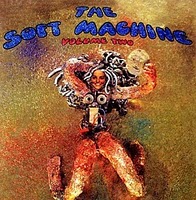 My personal favorite entry in the Soft Machine catalog, Volume 2 perfectly balances the psychedelia of their debut with the jazz-rock leanings of follow up Third. Sporting a stoner-friendly, reverb-drenched production, Wyatt’s vocals are as expressive as ever, with his drum prowess underscoring the tragedy of his paralysis a few years later, while Ratledge is favoring thick acoustic piano chords as much, if not more than, organ. Kevin Ayers is gone and in his place we have Hugh Hopper filling in the bass seat, decidedly more nimble-fingered and with his oft used fuzz pedal in tow, not to mention brother Brian on sax. Like their first album, side one consists of a suite of sorts, something of a cut and paste job that nevertheless keeps things going with highlights like the Third predicting sax driven “Hibou Anemone And Bear”, and “Dada Was Here” with Wyatt’s passionate yet nonsensical vocal delivery. Side two tends to follow a more conventional arrangement of separate songs, favorites being the twisted acoustic “Dedicated To You But You Weren’t Listening”, “Pig” with it’s heavy fuzz-bass intro, and “10:30 Returns To The Bedroom” closing the album with some rapid fire fusion, and closing the door on Soft Machine’s pysch days for the jazzier pursuits to come. Volume 2 is one of those “difficult” albums that nevertheless draws one back continually, melodic content complex yet somehow totally captivating, instrumental aptitude in bounds, but focused for ultimate effect. –Ben
My personal favorite entry in the Soft Machine catalog, Volume 2 perfectly balances the psychedelia of their debut with the jazz-rock leanings of follow up Third. Sporting a stoner-friendly, reverb-drenched production, Wyatt’s vocals are as expressive as ever, with his drum prowess underscoring the tragedy of his paralysis a few years later, while Ratledge is favoring thick acoustic piano chords as much, if not more than, organ. Kevin Ayers is gone and in his place we have Hugh Hopper filling in the bass seat, decidedly more nimble-fingered and with his oft used fuzz pedal in tow, not to mention brother Brian on sax. Like their first album, side one consists of a suite of sorts, something of a cut and paste job that nevertheless keeps things going with highlights like the Third predicting sax driven “Hibou Anemone And Bear”, and “Dada Was Here” with Wyatt’s passionate yet nonsensical vocal delivery. Side two tends to follow a more conventional arrangement of separate songs, favorites being the twisted acoustic “Dedicated To You But You Weren’t Listening”, “Pig” with it’s heavy fuzz-bass intro, and “10:30 Returns To The Bedroom” closing the album with some rapid fire fusion, and closing the door on Soft Machine’s pysch days for the jazzier pursuits to come. Volume 2 is one of those “difficult” albums that nevertheless draws one back continually, melodic content complex yet somehow totally captivating, instrumental aptitude in bounds, but focused for ultimate effect. –Ben
Led Zeppelin “Presence” (1976)
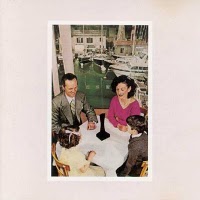 One of Led Zeppelin’s greatest strengths was their willingness to explore and evolve, despite potential monetary incentive to put out more of the same. So, in 1976 we get Presence, with its harder grooves and choppy, funky guitar licks and not too much psychedelic blues wandering (“Tea for One” excepted) or acoustic folk-rock. Whether you consider this evolution welcome or not, it was certainly organic, and it resulted in the release of two flat-out, epic masterpieces. “Nobody’s Fault But Mine” follows in the time-honored tradition of Led Zeppelin copping a song that pre-dates them by decades, and transforming it into something so majestic (and bombastic) that it practically renders all previous versions inert by comparison. “Achilles Last Stand” is something else entirely. It may be the best ten-minute track ever recorded. It’s certainly in the top three in Zeppelin’s discography. Blistering, intense and mind-blowing; think Rush on steroids. So, when viewed as a whole, Presence holds up a lot better than its reputation would suggest. –Lucas
One of Led Zeppelin’s greatest strengths was their willingness to explore and evolve, despite potential monetary incentive to put out more of the same. So, in 1976 we get Presence, with its harder grooves and choppy, funky guitar licks and not too much psychedelic blues wandering (“Tea for One” excepted) or acoustic folk-rock. Whether you consider this evolution welcome or not, it was certainly organic, and it resulted in the release of two flat-out, epic masterpieces. “Nobody’s Fault But Mine” follows in the time-honored tradition of Led Zeppelin copping a song that pre-dates them by decades, and transforming it into something so majestic (and bombastic) that it practically renders all previous versions inert by comparison. “Achilles Last Stand” is something else entirely. It may be the best ten-minute track ever recorded. It’s certainly in the top three in Zeppelin’s discography. Blistering, intense and mind-blowing; think Rush on steroids. So, when viewed as a whole, Presence holds up a lot better than its reputation would suggest. –Lucas
Harry Nilsson “Nilsson Schmilsson” (1971)
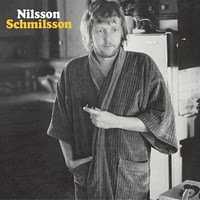 It’s the hallmark of a truly talented popsmith to make a collection of songs this weird and diverse so remarkably palatable. Nilsson is nothing if not inclusive, but he doesn’t pander. A lot of folks will know “Coconut” from Reservoir Dogs, and while that little island oddity is indicative of the adventurousness of the album as a whole, it isn’t indicative at all of any other track. Nilsson un-ironically employs strings, horns, rock guitar, mellotron and whatever else he thinks will do the songs justice, whether they’re his own or one of the three covers. It’s easy enough to let the perfectly crafted sounds waft on by with a smile, but the more I think about them, the more the depth is evident. –Lucas
It’s the hallmark of a truly talented popsmith to make a collection of songs this weird and diverse so remarkably palatable. Nilsson is nothing if not inclusive, but he doesn’t pander. A lot of folks will know “Coconut” from Reservoir Dogs, and while that little island oddity is indicative of the adventurousness of the album as a whole, it isn’t indicative at all of any other track. Nilsson un-ironically employs strings, horns, rock guitar, mellotron and whatever else he thinks will do the songs justice, whether they’re his own or one of the three covers. It’s easy enough to let the perfectly crafted sounds waft on by with a smile, but the more I think about them, the more the depth is evident. –Lucas
Lou Reed “The Blue Mask” (1982)
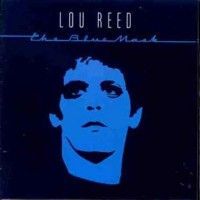
After a dispiriting early-’80s slump at Arista Records, Lou Reed renewed himself artistically by changing labels and releasing The Blue Mask on RCA in 1982. This was a brave move, since The Blue Mask is a resolutely uncommercial album, making no concessions in either its stark, flatly recorded ambience or harrowing themes. However, grace notes abound for the patient listener. Performing with a no-frills setup for the first time since the Velvets, Reed keenly matches words and music with the sparest of means to achieve the maximum end. The Blue Mask pits a hard-earned contentment (“My House,” “Women”) against the dizzying abyss lurking beneath the surface of life (“Underneath The Bottle,” “Waves Of Fear” and, most compellingly, the awesome title track itself). Running through all this, Reed and second guitarist Robert Quine intertwine their instruments, sustaining meditative interludes and codas which are closer to jazz than to rock. Bassist Fernando Saunders’ vibrant tone and supple lines also add a new element of flexibility to Reed’s music, and his gentle falsetto backing vocals make a nice contrast to Reed’s famously edgy song-speech. (Joe Sarno, Muze) –Singer Saints
Tiny Tim “God Bless Tiny Tim” (1968)
 A walking freak show and the ultimate novelty act of the ’60s. But behind Tiny Tim’s fruity falsetto antics lay a genuine love of his material, most of it taken from the 20’s – an equally odd time in popular music–before the rise of Bing Crosby–when nearly all white male vocalists were no-voice freaks. I can’t honestly say that Tim’s debut LP survives its own novelty value in the end. But it’s a well-produced smorgasbord of highly entertaining moments complete with genuine hilarity (“The Viper”) and some genuinely touching performances as well, especially the ones done in the singer’s natural baritone (Gordon Jenkins’ “This Is All I Ask,” “Then I’d Be Satisfied with Life.”) Another curiosity: why was this kind of faux-vaudeville so popular in the ’60s? Does anybody remember “Winchester Cathedral”? In that sense Tiny Tim fit right into his times. During the late ’50s and early ’60s when he performed at Hubert’s Museum (singing Don Gibson’s “Oh Lonesome Me” underwater) and appeared in Jack Smith’s Normal Love, he was merely freakish. –Singer Saints
A walking freak show and the ultimate novelty act of the ’60s. But behind Tiny Tim’s fruity falsetto antics lay a genuine love of his material, most of it taken from the 20’s – an equally odd time in popular music–before the rise of Bing Crosby–when nearly all white male vocalists were no-voice freaks. I can’t honestly say that Tim’s debut LP survives its own novelty value in the end. But it’s a well-produced smorgasbord of highly entertaining moments complete with genuine hilarity (“The Viper”) and some genuinely touching performances as well, especially the ones done in the singer’s natural baritone (Gordon Jenkins’ “This Is All I Ask,” “Then I’d Be Satisfied with Life.”) Another curiosity: why was this kind of faux-vaudeville so popular in the ’60s? Does anybody remember “Winchester Cathedral”? In that sense Tiny Tim fit right into his times. During the late ’50s and early ’60s when he performed at Hubert’s Museum (singing Don Gibson’s “Oh Lonesome Me” underwater) and appeared in Jack Smith’s Normal Love, he was merely freakish. –Singer Saints
Scorpions “In Trance” (1975)
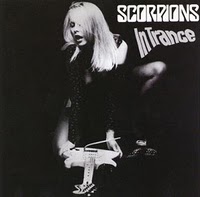 Three albums in and Scorpions are settling into an eccentric, decidedly European mix of piercing Teutonic fury and abject gothic balladry that would hallmark future Uli-era triumphs Virgin Killer and Taken by Force. In Trance features only a handful of hard rockers, but the manic, psyche-searing opener “Dark Lady” (featuring oddly appropriate lead vocals by Roth), tightly-clenched stomp of “Top of the Bill,” and weird, lost in translation “Robot Man” are all stinging entries, while “Longing for Fire” stands out as an unusual, brightly melodic moment. But it’s those troubled, moonlit strolls into balladry that really define the dark undercurrent of In Trance, with the mesmerizing title track, black veiled “Living and Dying,” and thunderous declarations “Evening Wind” and “Life’s Like a River” cementing the album under waves of isolation and melancholia. Only the lumbering blues “Sun in my Hand” hints at a loss of plot, one of Roth’s weirder Hendrix tributes that’s at least partially redeemed in his floating, Floydian instrumental “Night Lights” that closes the album. –Ben
Three albums in and Scorpions are settling into an eccentric, decidedly European mix of piercing Teutonic fury and abject gothic balladry that would hallmark future Uli-era triumphs Virgin Killer and Taken by Force. In Trance features only a handful of hard rockers, but the manic, psyche-searing opener “Dark Lady” (featuring oddly appropriate lead vocals by Roth), tightly-clenched stomp of “Top of the Bill,” and weird, lost in translation “Robot Man” are all stinging entries, while “Longing for Fire” stands out as an unusual, brightly melodic moment. But it’s those troubled, moonlit strolls into balladry that really define the dark undercurrent of In Trance, with the mesmerizing title track, black veiled “Living and Dying,” and thunderous declarations “Evening Wind” and “Life’s Like a River” cementing the album under waves of isolation and melancholia. Only the lumbering blues “Sun in my Hand” hints at a loss of plot, one of Roth’s weirder Hendrix tributes that’s at least partially redeemed in his floating, Floydian instrumental “Night Lights” that closes the album. –Ben


